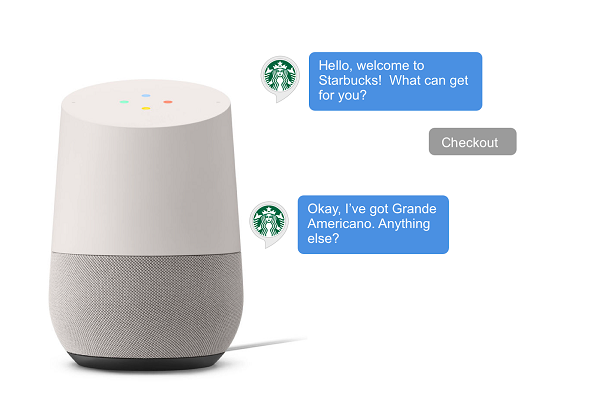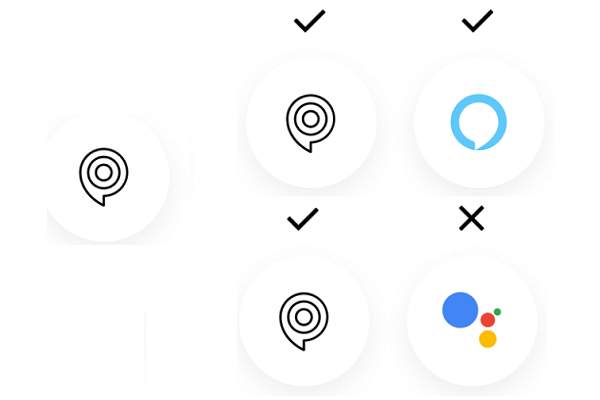Hey Siri And Alexa: Make Way For A New Wave Of Branded Voice Assistants
Hey Siri And Alexa: Make Way For A New Wave Of Branded Voice Assistants

It’s no secret to brands that they operate in a highly imbalanced digital landscape.
Big tech’s grip on consumers’ attention means they effectively “own the rails” and can exact a toll on brands that simply cannot ignore their scale to reach their customers.
Whether it’s Epic vs. Apple, Yelp vs. Google, or independent brands vs. Amazon Basics, brand-tech relationships that once felt symbiotic have in many cases devolved into tense conflicts, a prevailing sense of wariness, and partnerships not of choice, but necessity.
These tensions, which have been simmering in search, app stores, and eCommerce for years, are now playing out in a fascinating way in the voice assistant arena. Indisputably, Siri, Alexa and Google Assistant put voice assistants on the map, delivering the computing horsepower and abundance of cheap, quality devices to make voice technology a functioning, useful part of everyday life.

These assistants are a vital part of each tech company’s long-term strategy and woven deeply into the fabric of their end-customer experience, hence the push to seize market share, even at a per-device loss.
Unlike Apple, which has notably held off on enabling a Siri-specific voice app store, Alexa and Google have beckoned brands to build third-party voice apps on their assistants. These “skills” and “actions” populate now-vast marketplaces, where “Hey Google” or “Alexa” is the front door to a branded experience. For these assistants, having popular brands offer useful functions makes their platform more valuable.
For brands looking for a convenient way to sell, deliver or support their products and services, the scale of these big tech assistants as a channel is compelling — they’re in our speakers, TVs, phones, headsets, and cars. But far too many brands have conflated the potential of voice tech with the opportunities with big tech assistants, and the downsides of this myopia are coming into focus.
Much as only a handful of installed mobile apps see daily use, it’s immensely challenging for brands to build and sustain awareness and engagement with voice apps in these marketplaces.
Despite some platform-level efforts to recommend branded voice apps to users in response to relevant unbranded queries (e.g., “I want to meditate” may result in a skill recommendation), overcoming the “discoverability” challenge on Alexa and Google Assistant demands significant ongoing spending.

What’s more, the process of invoking branded apps also demands relegating the brand you want to engage with to the second position after the big tech-branded wake word (“Big Tech Assistant, open Brand X’s app”).
These marketplaces also place limitations on how voice apps are built (both creative and technical) and the ways in which data can be collected and leveraged by app publishers. Even with strict platform certification guidelines, today’s available voice apps index far higher on quantity than quality, leading some users to sour on the notion of using skills or actions because of a few bad experiences.
Platform-level changes also create major risks for third parties, as illustrated by the recent Google Assistant decision to bar transactions in a handful of European countries. Brands that spent hundreds of thousands of dollars to launch a commerce-driving Action on Google would not be pleased to have the fruits of their investment effectively de-platformed.

Amidst this backdrop, the savviest brands today are realizing that like big tech, they too have robust digital ecosystems – from mobile apps to websites to call centers to kiosks – and they have a right to build their own assistants inside them. Branded custom assistants have been picking up steam in recent years because they offer distinct advantages.
First, they meet consumers where they are already interacting with the brand, and can be transformational for the user experience within those touchpoints. Bank of America’s Erica elevates the mobile app’s UI — quickly responding to spoken or written questions whose answers are buried within menus, delivering proactive notifications, and more — but also differentiates the company’s overall consumer banking value proposition around always-on assistance.
Self-service automation through these assistants can save companies serious money and free employees for higher-level tasks, whether it’s a bank’s call center or the drive-thru at Wendy’s. And when embedded inside a digital property, voice assistants can use visuals to continuously convey their capabilities but also to deliver efficient visual outputs to spoken inputs.
Custom voice assistants also promise brands a much richer data capture opportunity than big tech assistants.
Consumer data is fuel for personalizing experiences, shaping marketing strategies, and informing product and service innovation. A granular view of what consumers say, and how and when they say it, is deeply valuable to brands. Big tech assistants present brands with data-gathering limitations (understandable, to help deflect further privacy-related scrutiny coming to their platforms) but also enjoy access to the data from branded voice apps on their platform.
That’s a tough pill to swallow for any business that feels it’s currently competing or will compete with big tech down the road.
Custom assistants make the data-for-value exchange cleaner for consumers and brands alike.
Furthermore, custom assistants open a powerful branding opportunity. Assistants can have distinct personalities that complement the brand, building affinity through they sound and the branded sonic palette that surrounds them. They often have their own wake words (e.g., Hey Spotify) – and it is unquestionably valuable to have consumers repeatedly say your brand out loud to get things done with ease.
For these reasons and more, it’s no wonder that we’re seeing significant investments in this space from a wide range of brands. Peloton bought Aiqudo in 2021 to power its voice assistant ambitions. Sonos bought Snips a few years ago to reduce its dependence on Alexa & Google Assistant on its devices. Snap bought Voca.ai to help integrate voice control into social media. And Walmart, which already had a custom employee voice assistant (AskSam), recently bought Botmock to leverage its conversation design tooling.
These are big names making category-leader investments in innovation, and the heat around custom assistants has not gone unnoticed by big tech. In early 2021, Amazon announced its Alexa Custom Assistant program to make Alexa technology available to brands seeking to build their own assistants, with the caveat that Alexa rides shotgun in any implementations, introducing a multi-assistant dynamic complete with handoffs to whichever assistant is best positioned to help for a given request. It remains unclear if brands will flock to this as a “one-stop-shop” type offering – following the lead of Stellantis, Disney, and Verizon – or opt to go their own way.
What is clear is that brands are looking to seize back control of their customer experience, their data, and their brand expression in the world of voice technology for the decades ahead. Whether these proverbial Davids can succeed in the shadow of today’s few voice Goliaths is the pivotal question for the next few years.
(61)


